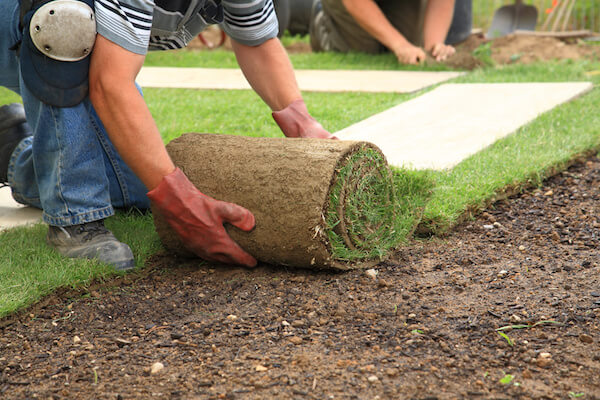
Annual Nitrogen Recommendations of Different Turf Varieties
Nitrogen is perhaps the most crucial nutrient your turfgrass requires to resist damage from pests, disease, and even to survive the searing heat of a Florida summer. How much should you apply and when? Read on for some quick tips and information.
Quick Reference for Annual Nitrogen Requirements for Top Turf Grasses
Shown as total pounds of nitrogen per 1,000 square feet for low maintenance versus high-quality lawns.
- Zoysia grass: 1 pound/2 pounds
- Bentgrass: 4 pounds/5 pounds
- Bermuda grass: 3 pounds/4 pounds
- Kentucky Bluegrass: 3 pounds/5 pounds
- St. Augustine: 2 pounds/ 3 pounds
Feeding Schedule for Application of Nitrogen for Best Results
Your application of fertilizer on your lawn or turf will depend largely on your location and growing season. In Northern Florida your grass goes into a dormant mode beginning in late autumn, while more southern locations may have a growing cycle well into December. Your grass cannot use the fertilizer when it is dormant, which results in your expensive chemicals simply running off with the rainwater.
You will want to break down the total annual nitrogen requirement into four even feedings so that your turf has a consistent supply to encourage new growth throughout the year. A good schedule to go by is feedings in:
- March
- May
- July
- September
For your southern Florida property, you may want to add a fifth application in December.
Should I Apply Fertilizer when the Sun Shines?
Actually yes. While a light rain helps to introduce all the nutrients in the fertilizer into the soil, a heavy downpour or tropical storm will cause the fertilizer to simply wash away and end up in your street drains. Applying in the early morning or late afternoon is best so that the chemicals have a chance to work down toward the soil before sunlight reacts with it and scorches your green lawns. Schedule the application on a dry day and water in after a couple hours, but don’t overdo it.
More is Not Better When It Comes to Fertilizer
If you skipped your May application, it might be tempting to put down a double-dose in July. Fertilizer doesn’t work better when you put more down. It combines with the soil and the grass plant draws the nutrients in the fertilizer up through the root system and into the blades. Your grass can only utilize up to a certain amount of nitrogen, even during an active growing cycle. Over application of fertilizer can discourage healthy root growth, cause the blades to burn under the hot sun, and results in a lawn that is more susceptible to pests, disease, and drought damage.
Test Your Water and Soil before the First Application
While you want to maintain the correct level of nitrogen for your lawn to continue to grow, if you add too much it can cause more harm than good. If your property uses reclaimed water to irrigate lawns, greens, and playing fields, you will want to have your water tested before fertilizing as it may contain a surprising amount of nitrogen from runoff and you may end up needing to purchase a lower concentration. Testing your soil before fertilizing can also help you detect any pests or diseases that may require additional treatments in order to see real improvement in appearance and health of your turf.
Follow State Regulations to Help Protect Your Waterways
For high-quality turf grass like Bentgrass varieties, they require the highest levels of nitrogen for the best performance and appearance. However, the State of Florida has put restrictions on the amount of nitrogen that can be applied at one time to prevent run-off and contamination of groundwater and waterways. Homeowners and professional landscapers are limited to applying one pound of nitrogen per 1,000 square feet at a time. So, if your annual requirements ask for five pounds, you will need to fit a fifth application to get the best results while helping to protect Florida’s environment.
For more complete information on growing a beautiful and healthy lawn or field in Florida, give the professionals over at Duda Sod a call. They will be happy to help you find the right products and services that will produce a greener landscape all year round.